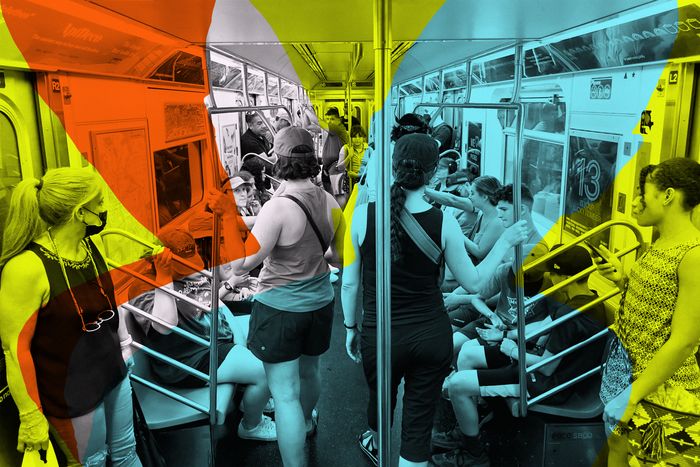
The return-to-office policies that many companies enacted after Labor Day — whether they’re necessary or foolish, popular or hated — have, in patches and fits and starts, begun to show up in the numbers. We learned last week that subway ridership has busted through its plateau of 60 percent of the pre-pandemic peak and is now at 3.7 million trips per day — up 35 percent over last year. It’s up even more on the weekends. Subway use has been especially robust in working-class neighborhoods, where many jobs aren’t particularly remote-friendly. School has started up too. The gradual establishing of the new normal, whatever that new normal is, is in full swing.
Head home at 6:30 p.m., and chances are the train is full but not jammed. You might get a seat; you might have to stand. The same goes on a weekend evening. Head home later, say at 11 p.m., and there’s a substantial scattering of people on the platforms — nothing like the unsettling mugger-friendly emptiness you saw in 2020 (or, for that matter, in 1979). It is, in Goldilocks terms, neither too busy nor too empty but just right.
You may recall what it was like in the several years preceding 2020: The platforms were so full at times that it felt as though people might end up on the tracks simply from being jostled. Waiting precariously there, you had no choice but to watch two or three jam-packed trains go by before you could shove your way onto one. In 2019, the typical weekday subway load was not 3.7 million per day but 5.5 million. Although the MTA denied that overcrowding was strangling the system, the load was inarguably, unpleasantly heavy. We’re nowhere near that level now, and nobody’s sure whether we will be again.
Instead, what we have is a system that’s healthily busy — which is not to say, of course, that it is all fabulous. There are stations, especially in Queens, that are in horrendous shape. Too many people have nowhere to sleep except on the trains, some of them are not well, and few if any are getting the help they deserve. There is a significant amount of crime that gives riders pause, although there are questions about how risky riding the subway really is. The numbers, at least, say that violence is at 2010-ish levels, and in those years, the system was regarded as pretty safe. Despite this, the perception of danger might still matter more than the data.
What this particular middling stage has going for it, though, is significant. The subway has, for a great part of the day, the ideal amount of ridership. The stations and trains are lively but not overwhelming, more or less full but not crammed. This is, at least in terms of busyness and personal space, how a functional mass-transit system ought to look.
And it is, of course, impossible for things to continue this way. Subway ridership doesn’t fully pay for itself at normal times — each fare brings in something a little south of half of the cost of a ride with taxes and tolls covering the rest. But it really doesn’t pay for itself under these conditions, because the MTA budget is built around higher expectations. A federal bailout covered the system’s debts after numerous dire months in 2020 and 2021, saving us from an immediate transit crisis. Even now, the MTA is spending hundreds of millions of dollars that it is not taking in. A $2.5 billion deficit lies ahead in 2025.
One of two things will now likely happen. Ridership may slowly rise to about its pre-pandemic level, and we’ll go back to the damply packed subways of yore, which are unpleasant but financially understood. Or the system will plateau for good at some level well below that peak, and this comparatively pleasant state of affairs will, somehow, have to find its financial underpinning up in Albany. Either way, the $15 billion worth of capital spending that congestion pricing is supposed to funnel over to the transit system cannot come soon enough. Until then (and beyond): Enjoy the occasional rush-hour seat while you can still get it.
More About the Subway
- The Hardest-Working Turnstile in the Subway
- Every Question We Could Think of About Congestion Pricing
- The Subway Joy Riders





